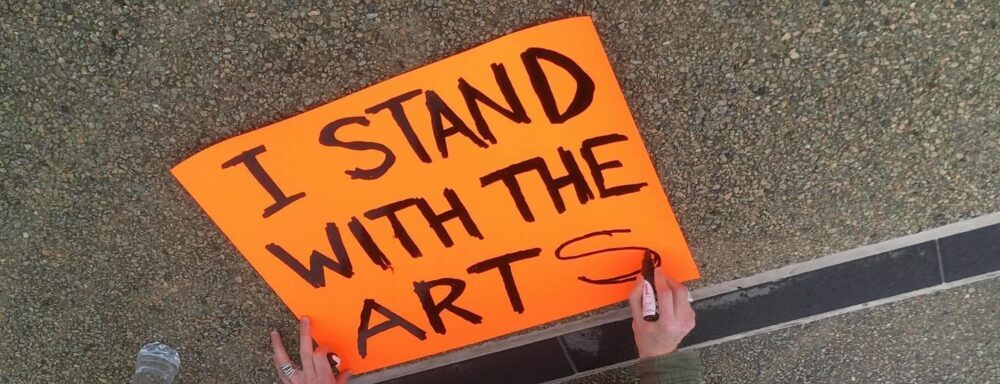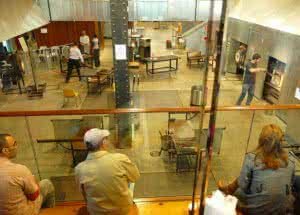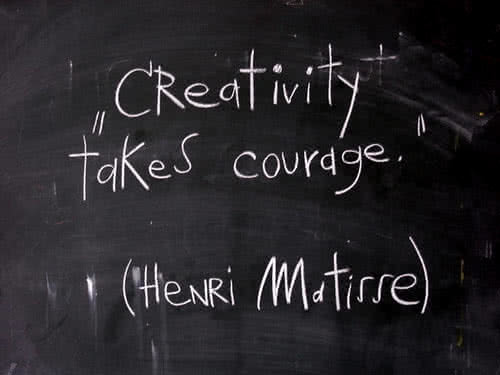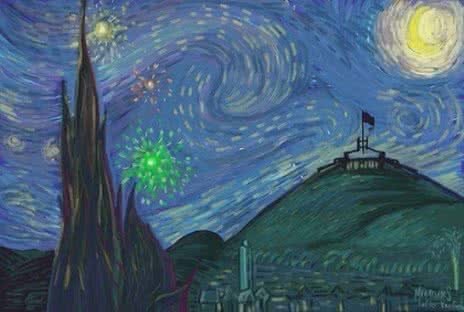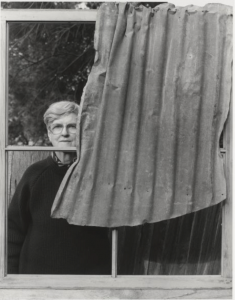 Just a heads-up that the next Childers Group forum will be held on Wednesday 19 September 2012. It will be 5pm for a 5.30 start, 7.30pm finish. The venue will be the Canberra Museum and Gallery Theatrette, Canberra City. The format of the discussion is still being finalised, but we can tell you that the three ACT Legislative Assembly members relating to the arts will be presenting their arts policies. Discussion will undoubtedly ensue. Formal marketing of the forum will commence shortly.
Just a heads-up that the next Childers Group forum will be held on Wednesday 19 September 2012. It will be 5pm for a 5.30 start, 7.30pm finish. The venue will be the Canberra Museum and Gallery Theatrette, Canberra City. The format of the discussion is still being finalised, but we can tell you that the three ACT Legislative Assembly members relating to the arts will be presenting their arts policies. Discussion will undoubtedly ensue. Formal marketing of the forum will commence shortly.
Author Archives: childers
The Childers Group’s vision for the Kingston Arts Precinct
In terms of the Kingston Arts Precinct, what is most important is that all those committed to the arts and cultural life of our region – especially the ACT Government – have a grand vision, a strategic overview, a long-term plan for what’s needed to develop this area as a lively precinct for arts activity and cultural events. It is a rare opportunity for the ACT to work with the various development authorities and stakeholders to establish an exciting set of cultural facilities and creative spaces in the vicinity of the iconic Kingston Powerhouse, now the home of the Canberra Glassworks, which is already a major national attraction.
The Childers Group’s vision is a vibrant and accessible arts precinct for the visual arts in all its diversity, including film, new media and creative industries such as architecture, graphic design and digital technologies. In the Childers Group vision, Kingston is a place for live performance to happen but music would not be the focus.
Possibilities include best-practice adaptive reuse of heritage places for appropriate arts activities, together with high-quality purpose-built venues for use by a range of professional and community groups, for example as exhibition spaces and all kinds of events and performance. All the key visual arts organisations – Megalo Print Studio, Canberra Contemporary Art Space, PhotoAccess, Craft ACT: Canberra Craft and Design Centre – should be assisted to relocate to Kingston. Other organisations, such as those relating to film, as well as creative-industry businesses, would also co-locate in the precinct. Artist studios and artist-in-residency facilities should be a key feature of the developments. The arts component should be enhanced with appropriate commercial infrastructure, such as cafes, bars, and restaurants.
Maximising public access to arts activity should be a core driving principle at the Kingston Arts Precinct. All those in the community should have the opportunity to see art being made, and make art themselves.
Is this the end of local arts content in The Canberra Times?
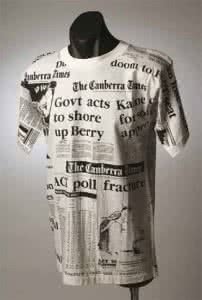 Reports are coming in that there have been significant changes to arts journalism at The Canberra Times. Two sources are the ABC and City News. Arts reporter Diana Streak has either been demoted or offered a redundancy, and literary editor Gia Metherall has been told her position is surplus to requirements. Some questions. What does this mean for the coverage of local arts coverage in the ACT region? How will the region know what’s happening in their communities? How will there be an intelligent and articulate discussion about what it means to be a creative part of Australia? More specifically, what does it mean for book reviews? No doubt reviews will still happen, but how will regional writers and publishers get their work into the broader public? Will these changes result in the urbanisation of Australian literature?
Reports are coming in that there have been significant changes to arts journalism at The Canberra Times. Two sources are the ABC and City News. Arts reporter Diana Streak has either been demoted or offered a redundancy, and literary editor Gia Metherall has been told her position is surplus to requirements. Some questions. What does this mean for the coverage of local arts coverage in the ACT region? How will the region know what’s happening in their communities? How will there be an intelligent and articulate discussion about what it means to be a creative part of Australia? More specifically, what does it mean for book reviews? No doubt reviews will still happen, but how will regional writers and publishers get their work into the broader public? Will these changes result in the urbanisation of Australian literature?
The Childers Group understands that newspapers are businesses and that the print-based newspaper business model is collapsing rapidly. However, we also believe that newspapers have a role to play in terms of making an active contribition to the local communities in which they are situated, regardless of the mechanism – print or on-line or a combination of both. The arts and all arts communities deserve professional arts journalism.
The Childers Group is seeking your views on the best way to respond to this situtation. Email us at childersgroup@gmail.com. In the meantime, we’ll find out as much as we can.
UPDATE as at 16 July: We’ve been informed that a total of three positions have been axed at The Canberra Times: arts editor, literary editor, and features editor. Apparently The Canberra Times‘ intention is to focus on digital content, but the question remains: how to provide local arts content without professional and dedicated local arts journalists?
(Image courtesy of ACT Museums and Galleries.)
Congratulations Robyn
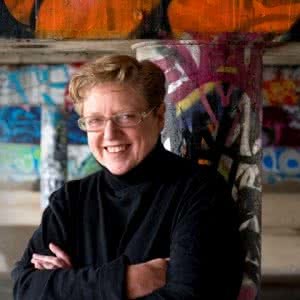 Congratulations to Centenary of Canberra Creative Director Robyn Archer for being appointed Deputy Chair of the Australia Council for the Arts. Not only is Robyn highly respected as an artist and festival director, she is also a strong and consistent advocate for the arts and cultural life of the ACT region. The next twenty-four months really are shaping up to be pretty special indeed.
Congratulations to Centenary of Canberra Creative Director Robyn Archer for being appointed Deputy Chair of the Australia Council for the Arts. Not only is Robyn highly respected as an artist and festival director, she is also a strong and consistent advocate for the arts and cultural life of the ACT region. The next twenty-four months really are shaping up to be pretty special indeed.
THE ARTS IN THE ACT REGION: BURNING ISSUES AND RADICAL IDEAS’ – SUMMARY OF FORUM
On Wednesday 18 April 2012 at The Street Theatre in Canberra, the Childers Group held its first forum, ‘The Arts in the ACT Region: Burning Issues and Radical Ideas’. The invited special guests were: Robyn Archer, Creative Director of the Centenary of Canberra; Vicki Dunne, ACT Opposite Spokesperson for the Arts; Yolande Norris, You Are Here Festival Producer; Caroline Le Couteur, Greens Spokesperson for the Arts; and Omar Musa, poet and performer.
Each special guest was asked to present a burning issue and a radical idea. Approximately 140 members of the ACT-region arts community attended and many took the opportunity to share their own burning issues and radical ideas. Genevieve Jacobs from ABC Radio Canberra facilitated the two-hour discussion.
The following serves as a summary of key points; it does not purport to document every issue or idea, but the key themes. The ordering of the key points does not necessarily reflect the priority of the arts community or the Childers Group. The Childers Group also wrote an article about the forum, ‘ACT a crucible of the arts’, which was published in The Canberra Times on 28 May 2012.
BURNING ISSUES:
Canberra
- what is our identity?
- Canberra is a small city with a large cultural structure
- Canberra is an innovative and creative city
- important to recognise that Canberra is a regional city, but strategically it’s very well placed
- the Centenary is making Canberra and Australia value local work
- value what we’ve got
- don’t listen to negatives – stop talking about Canberra having an inferiority complex!
- generally the ACT-region arts community is silent – stand up and be heard! (the Childers Group is an excellent evolution)
- make a connection between the south of the lake and the north of the lake
- Canberra has great youth circus – build on this
- it was generally agreed that Canberra and the region is rich in creativity and the arts are valued; investment in and the promotion of this flourishing region was strongly recommended by many attending the forum
The region
- go beyond the border – the border means nothing
- there’s great arts activity happening in the surrounding region area
- from a regional perspective, Canberra can be parochial
Policy
- we don’t have clear statements of what we want, i.e. a comprehensive, meaningful cultural policy
Support for artists
- cultivate local production
- support the voice of individual artists
- many artists don’t get support from local audiences
- concern that artist salary levels are too low (it was noted that this is also a national problem)
- how best to support artists with disabilities?
The economy
- the economics will defeat us if we are not creative in delivery
- there’s a schism between professional and community arts – there needs to be an investment in both
- housing affordability is a major challenge – what will this mean to the future of a creative capital?
- investigate and build alternative revenue streams
- how to build a culture of philanthropy?
- collecting and applying data is important
Arts in the public realm
- Canberra has a good compilation of facilities – bring it all together
- Canberra is too fond of the wrecking-ball i.e. it demolishes buildings too soon
- how to make the Kingston Arts Precinct and the Fitters Workshop truly come alive? New Acton is a great example of an arts precinct that brings everything together beautifully
- public art: how to get the balance right in terms of the expenditure and how to get the process right in terms of outcomes?
- art is an everyday part of life: how can we better integrate it?
- the ACT planning system doesn’t actively enable the arts
- spaces are needed for contemporary music gigs
- The Canberra Times could make a more positive contribution to how complex arts issues are resolved
Engagement, marketing and tourism
- the main problem lies with Canberra not telling its own story – there’s a lot happening and people don’t know about it
- how to bring the arts community and the broader community together?
- value and recognise local arts activity, not just ‘the blockbusters’
- the national cultural institutions tend to get all the limelight
- ACT tourism bodies need to take local arts activity seriously beyond the work of the national cultural institutions – there’s little interconnection with tourism and local arts events and activities
- cross-sector, cross-jurisdiction, cross-organisation collaboration is paramount
how to engage the transient members of the ACT community?
Arts in education
- we need to expand participation
- we need to hear from new strong voices
- more funding and support for facilitating engagement in the arts by young people
- how to get more people involved in poetry?
Engagement, marketing and tourism
- an ACT-region arts calendar
- an arts web-site based on the ‘AllHomes’ model e.g. ‘AllArts’
- make the most of www.creativespaces.net.au
- use the internet to sell Canberra content nationally and internationally
- tour and/or broadcast Canberra content to regional areas (and vice verse)
- find ways to bring back artists who have left the ACT region
- import the inspirational
- take up the opportunities presented by the National Broadband Network
- keep the You Are Here Festival going
- expand the Multicultural Festival to include more arts
- make the most of the Centenary of Canberra
- be outrageous, provoke comment
The economy
- double the ACT Government’s arts budget by 2020
Arts in the public realm
- a future-proof showcase venue to market ACT-region arts product nationally and internationally
- more adaptive re-use of old buildings
- let arts precincts grow on their own, flourish in an organic fashion, rather than rush or force them
- more local arts commissions in public art
- more art in architecture
- more functional art, e.g. bike stands designed by artists
- sound barriers so people can sleep and people can listen to music and bands can perform
- make Canberra a centre for guerilla art
Arts in education
- an ACT-wide poetry slam program in schools (hip hop and slam poetry is a great opportunity to engage young people in arts activity)
- we have an amazing and vibrant youth culture – let’s build on this
- nurture the instinct in our children to go out and develop art
ACT a crucible of the arts
Throughout much of the past twelve months, across the suburbs of the National Capital and beyond, there has been a conversation. It began in a lounge-room and was progressed in cafes and bars and restaurants and foyers, even spreading out to a pub in Goulburn. At the core of this conversation was a question: does the ACT region warrant a voice for the arts? The answer was yes, it sure does. And so the Childers Group – an independent arts forum – was born.
Like any sector that matters, the arts aren’t immune to passion and opinion. However, the Childers Group approach is to bring cool, calm, considered thinking to the arts and to always base its advocacy on fact. And the fact is the ACT region is rich in arts activity and rich in arts participation. In the global context, the population is well remunerated, highly educated, and actively engaged in arts and cultural activities. But how can the arts and cultural life of the ACT region progress to the point where creativity is at the very centre of daily life, and we can be proud of it?
The arts investigate, illuminate, challenge and connect; they tell the story of what it means to be Australian in all its layers and guises. Participation in the arts fosters a sense of community, promotes health and well-being, encourages cooperation, and helps to reduce the pressures of a competitive, materialistic society.
The arts aren’t afraid.
These are easy words to say, but the aspirations are difficult to advocate.
Another fact: in our country, as soon as our cultural, business and political leaders begin talking about the importance of the arts, they run the risk of being seen to be out of touch, of being elitist, of somehow forgetting that their real job is to know the cost of a loaf of bread. But how can the arts even be considered as ‘elitist’ when, according to the Australia Council, an artist earns on average $35,900 per annum, of which only $10,300 comes from their creative practice if they are male, and a mere $5,000 if they are female?
It’s also a fact that we live in society, not an economy. It would be a rare Australian – no matter where they live, city or country, coast or inland – who gets to the end of their day and hasn’t been touched by some kind of creative endeavour: extraordinary music, or artfully crafted words, or skilful design of home-ware, machine and technology.
Despite everything, creativity surrounds us; it’s part of who we are.
In April this year, the Childers Group hosted a public forum titled “Burning Issues and Radical Ideas”. To the Group’s surprise and delight, almost 150 people turned up, proving that our community is bursting to explore the importance of the arts and life’s cultural experiences.
Issues raised at the Forum represent opportunities.
There was a surprising emphasis on the potential of cross-sector, cross- disciplinary, cross-regional cooperation: between groups and individuals; between universities, colleges, and school communities; between professional and amateur; between the public and the private sectors; between government jurisdictions and government departments; between city and town and village.
The installation of the National Broadband Network presents a new digital environment for Australia, offering endless possibilities for cooperation and the exchange of ideas and information. Artists and all those engaged in creative practice can already see that the NBN will open up a new digital future, one that will invigorate Australia. The challenge is to use this opportunity to meet the expectations of our artists and facilitate innovative thinking more generally.
A frustration expressed at the Forum concerned the lack of a vision for our arts and creative future, including a clearly articulated and practicable strategic plan at all levels of government. Short-term, ad hoc decisions in funding and planning delay or impede the development of arts infrastructure.
Forum attendees asked how can we amend our urban planning systems so that the organic growth of arts precincts can be facilitated, especially the sort of precincts that pulse with life and invite extensive participation?
Attendees highlighted the impressive range of arts practices, exhibitions and performances scheduled in the ACT region, but asked how can the arts and cultural sector better connect with tourism promotion and publicity?
Canberra’s national cultural institutions, museums and galleries, universities, colleges and schools employ many visual artists, musicians, composers, and writers, and their presence and their work is integral to the vitality of our region’s cultural life. They offer a high level of professionalism as a benchmark for the community. The inter-connection between institution-based artists and cultural infrastructure – arts organisations, arts centres, and community groups – is central to the quality of arts experiences available. The wide-spread outpouring of concern about proposals to reduce specialist music tuition at the ANU School of Music exemplifies the importance of the link between the School’s professional musicians and the region’s music community, which relies on specialist expertise at a high artistic standing.
The ACT region is home to a wide range of professional artists, many of whom straddle the institution-community divide. These practitioners form the back-bone of our cultural life, contributing to the vitality and energy in our communities. Without an institutional employment base, they would be lost to us. Without these artists, we lose their ideas, expertise and inspirational practice premised on research, innovation, technical risk, and the acquisition of new knowledge. Without these artists, we are all less inspired to think in new and exciting ways.
In 2013 there are two significant birthdays in our region: the Centenary of Canberra and Goulburn’s 150th as a city. Now is the time to capitalise on the depth of creative talent and the quality of cultural life around us. Now is the time to tackle big issues, support radical thinking, to be brave. Now is the time to highlight the national and international achievements of our artists and arts organisations and the significance of our educational and cultural institutions. Now is the time to celebrate with confidence and generosity the inspired creative crucible that is the ACT region – there is no doubt that it can be a place that lifts us all above life’s utilitarian dimension. The Childers Group is serious about that word crucible, because we have at our core Canberra, the nation’s capital city.
In the year of significant milestones, let’s honour the quality of cultural life and the creative crucible that is the ACT region. The spirit of that idea makes us a very special place indeed.
This piece, which was first published in The Canberra Times on 28 May 2012, was written by Professor David Williams AM and Nigel Featherstone, who are foundation members of the Childers Group.
Post-forum opportunities
 Two key issued that were raised at the ‘Burning Issues and Radical Ideas’ forum on 18 April were artist incomes/employment and diversifying funding opportunities through philanthropy. All of us here at Childers Group HQ love good news, so here’s some good news on these two issues.
Two key issued that were raised at the ‘Burning Issues and Radical Ideas’ forum on 18 April were artist incomes/employment and diversifying funding opportunities through philanthropy. All of us here at Childers Group HQ love good news, so here’s some good news on these two issues.
New artist-in-residence funding program for the ACT region:
First up, the ACT Government through artsACT has established Arts Residencies ACT, which is providing funding to help organisations establish an artist-in-residency program. This could mean ACT-region artists get to work with a particular organisation – and it doesn’t necessarily have to be an arts organisation, which provides cross-over opportunities and career expansion for the artists involved – or it could involve bringing in national artists to work in the ACT region and engage with local communities. Applications open today and close on Friday 8 June. For more information, go here.
Arts philanthropy seminar to be held in Canberra:
In terms diversifying funding opportunities, at 4pm on Thursday 31 May at the National Portrait Gallery in Canberra, the Australia Council’s Artsupport team is holding a seminar on best-practice in private support for the arts. According to Artsupport, the unit recently organised and led a philanthropy leadership study tour to New York for the Chairs and Chief Executive Officers of Australia’s major performing arts companies – Melbourne Theatre Company, Belvoir, Bell Shakespeare, Black Swan State Theatre Company, Sydney Dance Company, Queensland Ballet, Bangarra Dance Company, Tasmania Symphony Orchestra, Adelaide Symphony Orchestra and State Opera of South Australia. The study tour met with the CEOs, Development Directors and key Board Members of New York companies – Metropolitan Opera, New York Philharmonic, American Ballet Theatre, Brooklyn Academy of Music, Public Theatre, Signature Theatre, Orchestra of St Luke’s and Alvin Ailey American Dance Theatre. The intention for the study tour was to witness best practice in private support for the arts, to be inspired, benchmark and refresh ideas. Participants will share their insights. The seminar is free. Go here for more information and to register.
See why we love good news so much?
THANK YOU
 Here’s a huge thank you to everyone who attended the Childers Group’s inaugural forum, ‘Burning Issues and Radical Ideas’ last night.
Here’s a huge thank you to everyone who attended the Childers Group’s inaugural forum, ‘Burning Issues and Radical Ideas’ last night.
It was completely brilliant to see so many people pack out the Street Theatre stage – there was over a 100 of you up there! – and more spilling into the auditorium. Inspired by our extraordinary special guests – Robyn Archer, Vicki Dunne, Yolande Norris, Caroline Le Couteur, and the utterly unstoppable Omar Musa – we were amazed how forum participants were brave enough to ‘move up to the table’ and share their burning issues and radical ideas. Without the artful facilitation of ABC Radio’s Genevieve Jacobs, well, we couldn’t have done it.
What happens now? We’ll be distilling the notes that were taken – one of the Childers Group members ended up with 10,000 words in his laptop! – and posting them here, as well as forwarding them to all those who are in the position to make the arts in the ACT region really come alive, including the ACT Government, the NSW Government, key arts organisations, just to name a few. Perhaps most importantly, we hope that you’ve taken away some great ideas yourself, and that you might even run with them and make them happen. If so, do let us know how you’re going and if there’s anything we can do to help.
Please note: we’re committed to hearing feedback on all our activities, including the ‘Burning Issues and Radical Ideas’ forum – you can post comments to us below, or chat to us via our Facebook page, or email us direct if you’d like to be a little more private about it. We might even sit down and have a coffee with you. Whilst we’re a volunteer-run group without funding and limited resources, we’re always interested in new and exciting ways to engage the ACT-region arts community. And we want your thoughts. Yes, we’re serious.
Much gratitude to our supporters: The Street Theatre, BMA Magazine, and the wonderful folk at New Best Friend for their ongoing graphic design and web-site design and management.
And yes, we’ll be doing it all again. Stay tuned.
IT’S FORUM DAY!
All the details are here.
THE NEED FOR VISION: our response to the draft ACT Arts Policy Framework
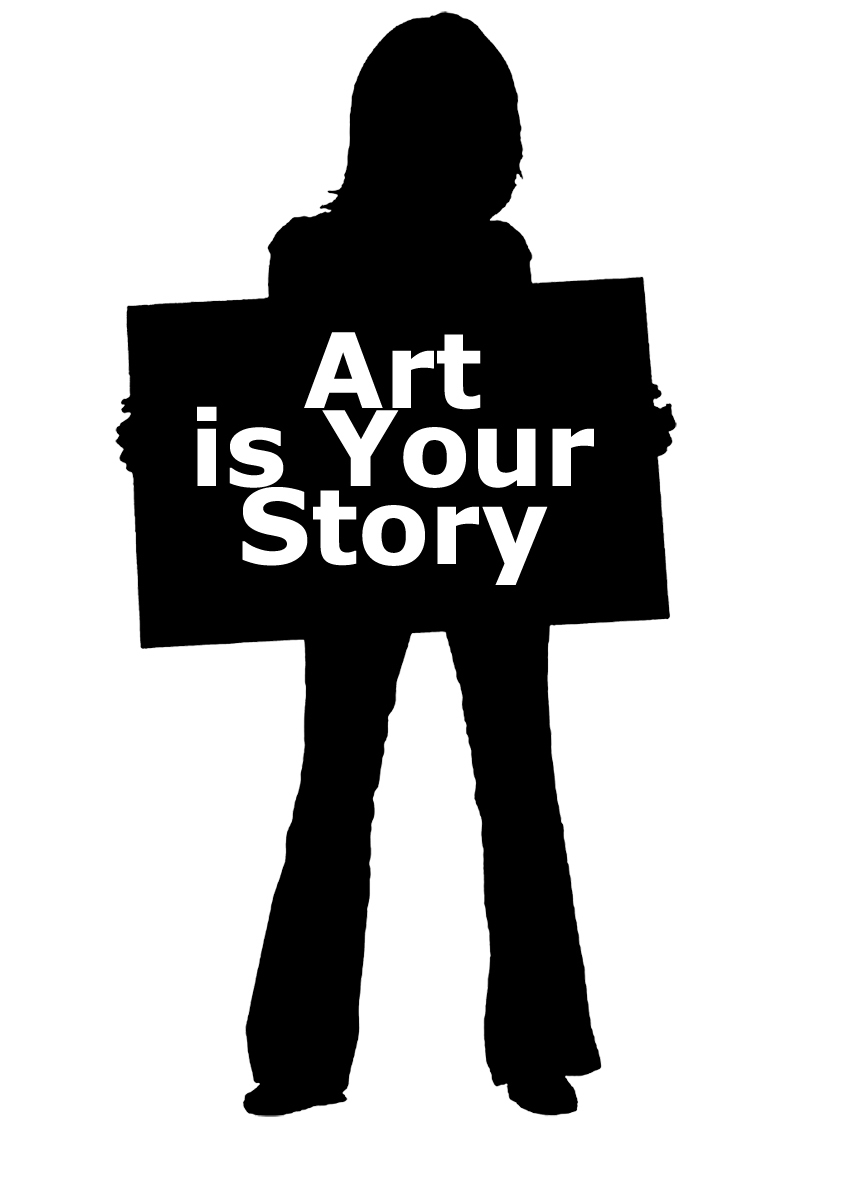 The recently released draft ACT Arts Policy Framework supersedes Arts Canberra: Action Statement for the Arts 2006-2008 and, we assume, related documents such as the ACT Action Statement for Public Art (May 2007).
The recently released draft ACT Arts Policy Framework supersedes Arts Canberra: Action Statement for the Arts 2006-2008 and, we assume, related documents such as the ACT Action Statement for Public Art (May 2007).
The draft document proposes four goals together with brief dot-points indicating how these goals will be achieved. The stated goals are to:
- increase community access and participation;
- support artistic excellence and artistic diversity;
- strengthen capacity of the arts to contribute to social and economic outcomes; and
- foster artistic innovation, creative thinking and sustainability.
The Childers Group appreciates the development of the draft ACT Arts Policy Framework and that it has been made available for public comment.
However, the Group believes the final Arts Policy Framework should be one that befits the capacity of the sector: it should be confident about its purpose and how it will contribute to arts development, and it should have a clearly articulate vision that energises arts activity, particularly in the context of the Centenary of Canberra.
More specifically, the Childers Group advocates for an arts policy framework that:
- establishes the principles that will guide arts/cultural priorities and programs;
- acknowledges the strengths of the sector, and the challenges ahead;
- contains bold ideas for the future;
- strongly advocates the importance of access and participation in the arts and the value of the arts and cultural life in our community;
- promotes the notion of the intrinsic value of the arts while seeking to involve and engage with a wider constituency for mutual benefit;
- makes a commitment to support for artists who are taking risks with new and innovative arts practice;
- places emphasis on a whole-of-Government approach to policies and programs designed to support arts and cultural development;
- includes a public art commissioning program (or the percent-for-art scheme);
- develops stronger links and relationships with ACT Tourism and related agencies and the national cultural institutions to create opportunities for the arts;
- indicates a time-frame for the life of the policy;
- acknowledges that leadership in setting appropriate payments to artists and arts workers is crucial to arts viability and a sustainable future;
- recognises that festivals, feature events, celebrations and other special anniversaries represent important opportunities for arts and cultural development;
- supports arts opportunities available by developing co-operative arrangements with the University, College and School education sector, heritage facilities and services;
- promotes the benefits of private support and working arrangements with the corporate sector both in terms of projects, commissions, sponsorship and philanthropy;
- builds on relationships with the surrounding regional communities;
- is committed to supporting key arts organisations, which are central to the vibrancy and life of our city and the region;
- is written in clear and active language to maximise communication and effectiveness.
The Childers Group sees the 2010 Review of the Arts in Canberra (Loxton Report) and other relevant national documents, including the 2011 National Cultural Policy Discussion Paper, the Forward Plan for Contemporary Australian Art (Sept 2010) and the Dance Plan 2012, as useful references in preparing a policy for arts.
The Group would welcome the opportunity to contribute to the further development of the ACT Arts Policy Framework.
*
artsACT’s closing date for comment on the ACT Arts Policy Framework is 10 April 2012.
